Physical Address
304 North Cardinal St.
Dorchester Center, MA 02124
Physical Address
304 North Cardinal St.
Dorchester Center, MA 02124
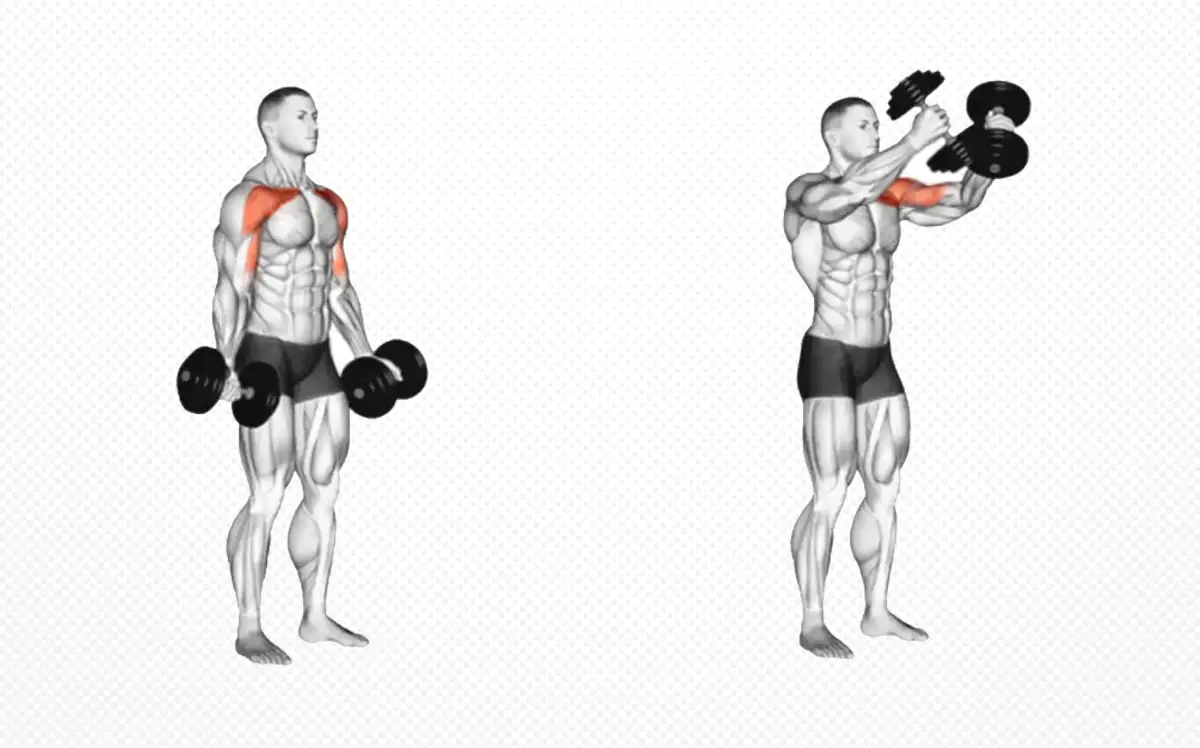
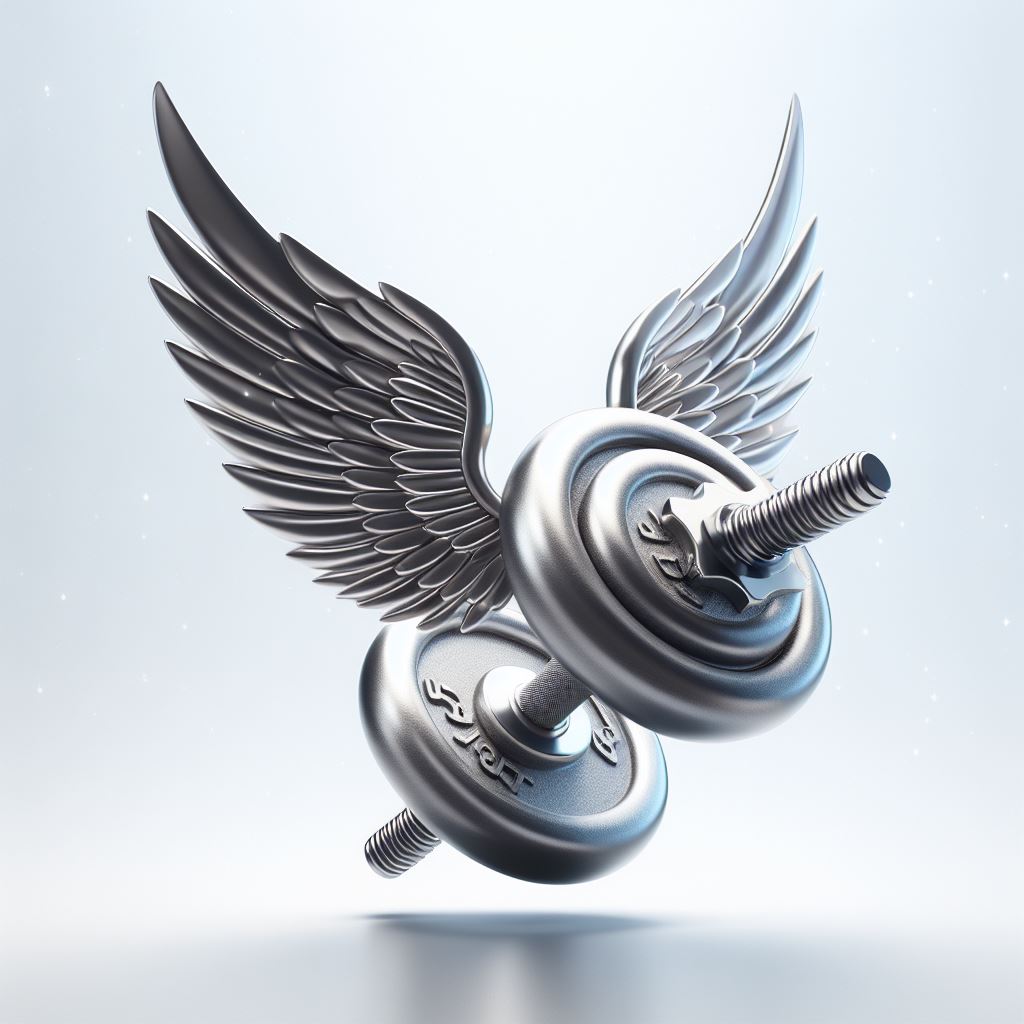
When it comes to upper body development, Shoulders are the most important muscle to focus on and dumbbell shoulder flys with its variations have a big impact on shoulder growth and strength. Let's dig deep and see how well dumbbell shoulder flys help us raise upper body strength and size.
The anatomy of shoulder muscles is very simple, it has three major heads to train for the rear head, lateral head and the front head. Training all three heads will result in an aesthetic looking shoulder, if you fail to train each head with equal importance it might lead to an imbalance.
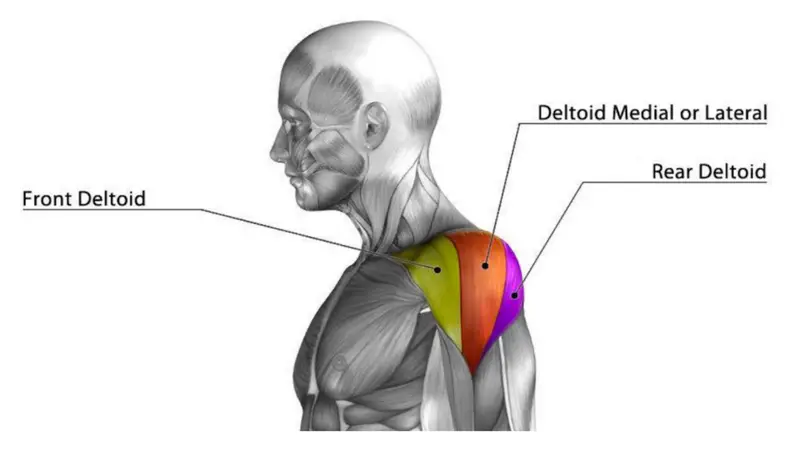
The importance of good shoulder strength will also result in a better lifting ability in other exercises as well, the rear delts will support your lat pulldowns and rows. Lateral head will support your deadlifts and shrugs and the front head will support your bench press and clean and snatch.
The old school strongman routine mainly involved presses and front raises with a barbell, but slowly and steadily shoulder flys came into the picture and their value in shoulder development kept increasing ever since.
A shoulder fly exercise/" title="exercise" data-wpil-keyword-link="linked">exercise is called so because it mimics the flying motion holding a dumbbell.
It is a simple mechanism where you hold the dumbbell and raise your arms up and lower them down in a given plane to hit a specific shoulder head.
There are many variations of a shoulder fly using a dumbbell like the lateral raise and rear delt fly. Let's look into these exercises in detail and understand how they help us build solid shoulder gains.
This exercise is performed by almost every gym goer. Although it is difficult to progress in this exercise, results are guaranteed.
The dumbbell lateral fly is the only exercise for the lateral head of the shoulders, other exercises for lateral heads are just another variation of this exercise.
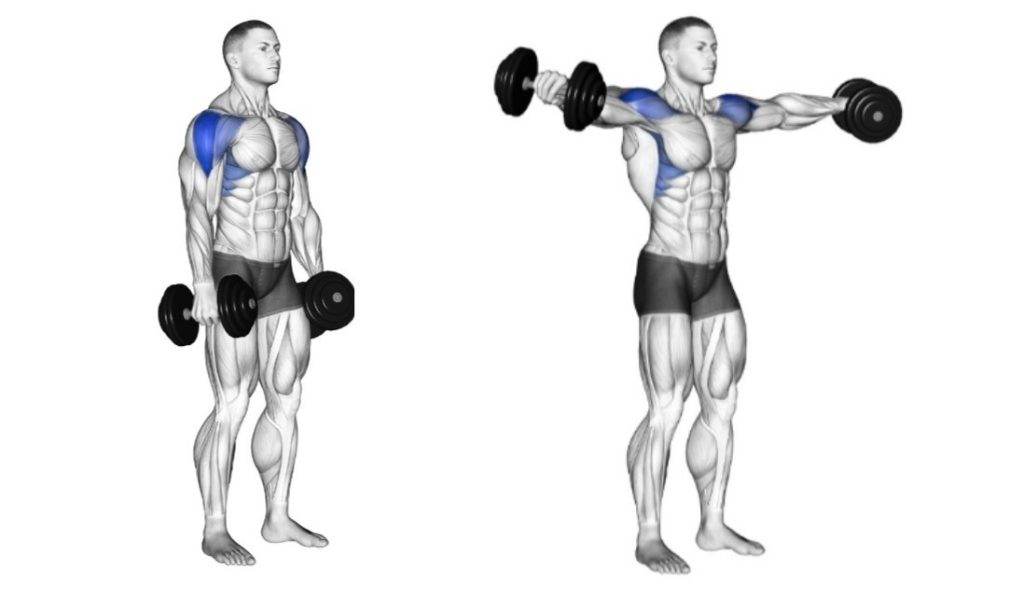
To perform dumbbell lateral flys you grab a pair of dumbbells and stand with a slight bend in your knees.
Lean forward a bit so dumbbells aren't hitting your thighs or hips, this is your starting position. Raise your arms in a front plane till your arms are parallel to ground and then slowly lower down the weight to starting position and repeat.
Try not to swing the weight and just move your arms in the plane
If the movement is difficult to perform then lower the weight.
Try to control the weight, don't swing and use momentum.
It takes time to progress to a heavier weight, be patient.
The standing dumbbell rear delt fly or the reverse fly is one of the best shoulder development routines which even experienced lifters use for a long time.
The primary muscles targeted in a standing dumbbell fly are the rear deltoids, to some extent it also trains the upper back muscles too.
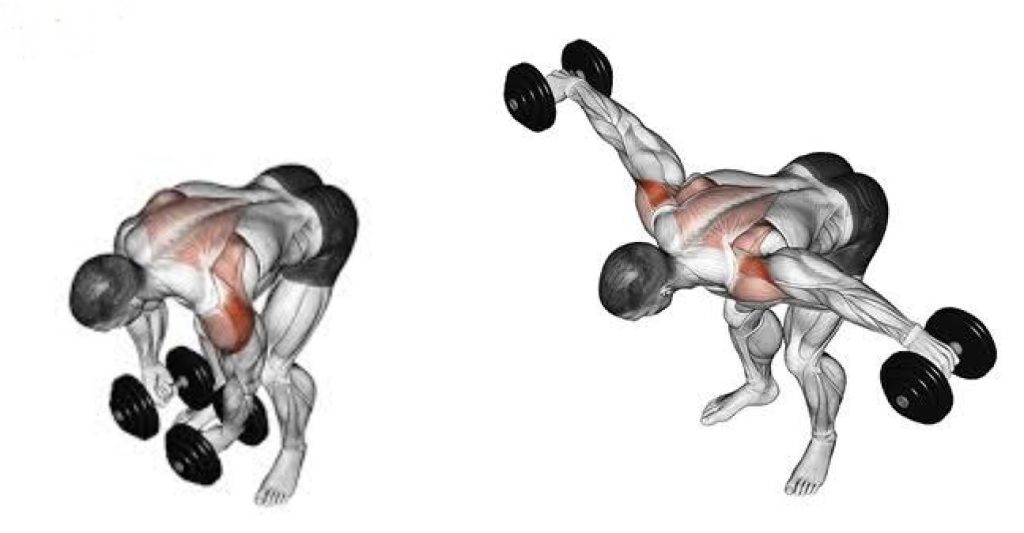
First grab a pair of dumbbells and lean down so your torso is parallel to the floor, maintain a strict arch in your back. Then bring the dumbbells to front of your face and hold them in a neutral grip, this is your starting position.
Take a deep breath and bring dumbbells so your hands are parallel to the ground and then slowly lower down the weight to reach starting position and repeat.
Holding a bent position is tough sometimes so try doing this exercise early on in your routine.
Don't swing and use excess momentum, keep the tempo of the movement slow and controlled.
Do not go beyond the parallel position or this might just turn into an upper back exercise rather than working your rear delts.
Don't rush this exercise, progressing is a slow process when using dumbbells instead of a machine.
Always keep your head in line with your torso to avoid unnecessary lower back activation.
The side lying rear delt fly is mostly used by a veteran lifter but a beginner can also do them with lighter weight with ease.
The primary targeted muscles while performing a side lying fly are the rear deltoids.
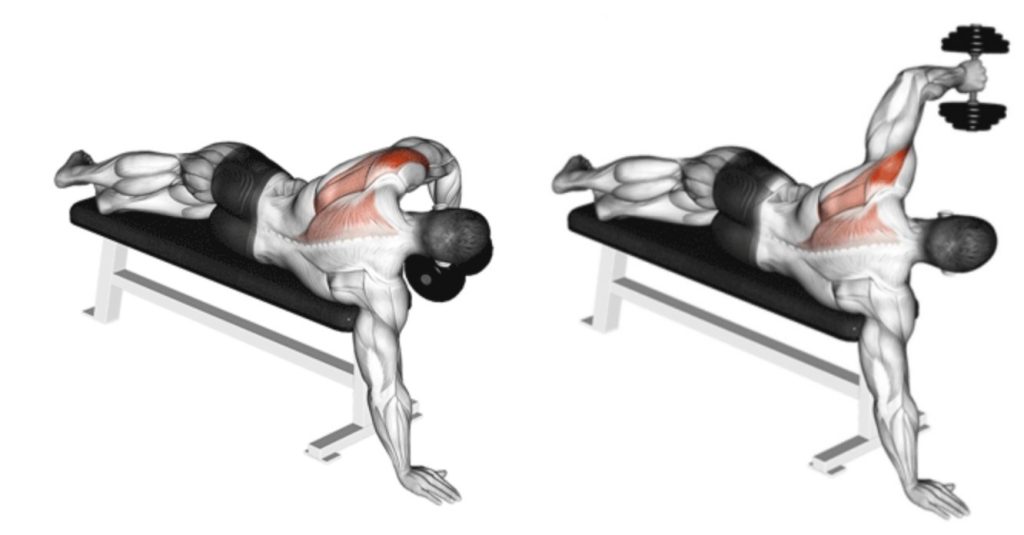
To perform the side lying rear delt fly, first setup a bench at 0° and lie on it resting on one side of either shoulder. Grab a dumbbell in the hand which is not lying on the bench. Place the other hand on the floor so you get a proper leverage to avoid any unnecessary body movement. This is your starting position.
Raise the dumbbell from the floor to hoist it up like a flag and once reached top slowly return to starting position.
Repeat for both arms equally.
If you feel unstable doing this exercise then try holding the bench rather than keeping it on the ground.
Stay aware of how far you take the dumbbell, you don't want to tip over to the other side.
Keep a slow tempo and maintain deep breathing throughout the movement.
The head supported rear dumbbell fly is a variant of the standing dumbbell rear delt fly, this variant helps overcome balance requirement and focus on the movement.
The target muscles when doing head supported fly are the rear deltoids, if you wish you can extend your arms further to hit your upper back and traps.
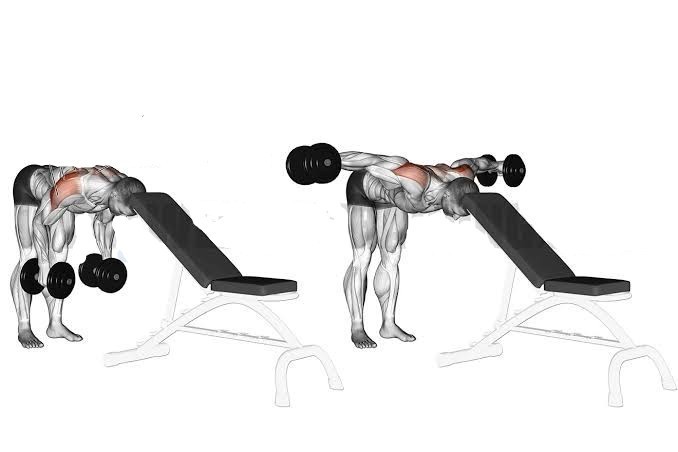
First set up a bench to a height that can support your head at a bent position of the torso. Place the dumbbell on the floor and bend down with your head resting on the bench and only after you've placed your head you will pick up the dumbbells. This is your starting position.
Lift the dumbbells sideways so that your hands are parallel to the ground. Once reached 90° you slowly lower the weight to your starting position and repeat.
Don't lift the dumbbells first and then try to rest your head, this might cause injury to your head or neck.
Don't overextend beyond the parallel hands position to the floor, this will shift the tension from your rear delt to the upper back and traps.
Maintain a slow tempo for maximum results.
The shoulder muscles are indirectly worked in compound movements like presses, rows and pull downs. Keeping this in mind you must choose any other variant with the intention that you either need more stimulus for growth or do you want to train shoulders so that the other compound movements become easier. If you are already maxing out on your compound lifts then training shoulder after them would lead to overtraining.
Depending on your workout program, experience in lifting and your intensity your sets, reps and frequency of shoulder exercise varies
If you are novice in lifting then you should add more sets of shoulder dumbbell flies in your workout.
The shoulder muscles are bigger than your pectorals (chest muscles) they can handle more volume, intensity and recover also easily.
Try to hit shoulders at least twice a week with an average of five sets each of 10-12 reps on lateral raise, 4 sets each of 8-10 reps of reverse fly per workout would suffice for now.
Slowly and gradually you increase the weight and reduce the sets and reps.
The average workout enthusiast will gain a little bit of knowledge on how well the dumbbell flys are by now.
Your job now is to test how well you can do the movement and increase the weight you're lifting with impeccable form.
With 4 sets per head, performed till failure once or twice per week will yield greater results.
The advanced lifter is familiar with what works for him and is still looking for better results. Reaching a plateau is common at this stage.
Use different variations like head supported rear delt fly, side lying rear delt fly and seated lateral raises for better range of motion, greater activation and contraction.
At this point if your compound lifts are also high in weight then your shoulder workout might just need one or two sets for a complete workout. Perform those two sets till failure or near it and you will certainly break any plateaus and keep growing.
Just remember overworking the shoulder muscles is what we are trying to avoid and keeping a healthy shoulder joint which helps us keep working out is what we must strive for first.
Even though the shoulder flys are essential for growth it is sometimes not possible to perform them with dumbbells as they might cause excessive momentum, or even balance issues while performing.
Here are better variations of shoulder flys without the dumbbell.
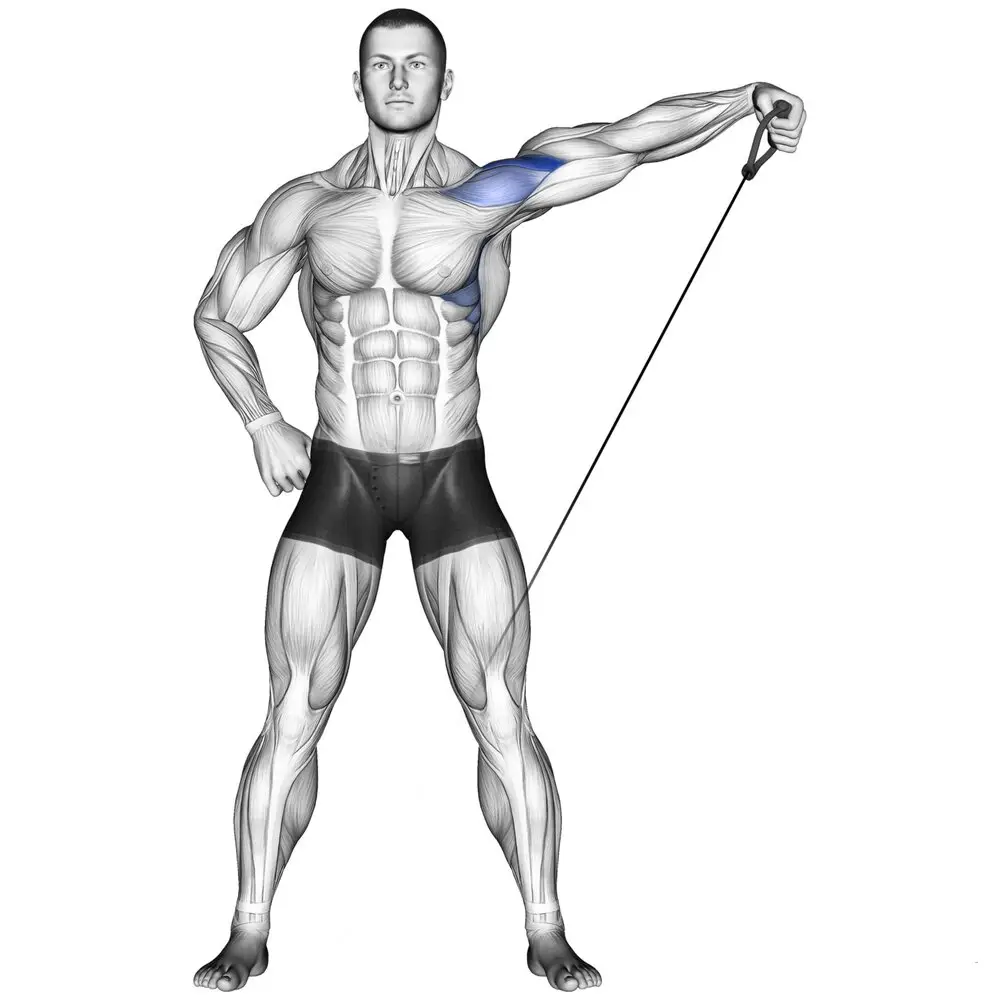
The biggest problem with dumbbell flys is the lack of constant tension and this problem can be solved using a cable machine.
Cable machines can help you perform lateral raise, rear delt fly with ease.
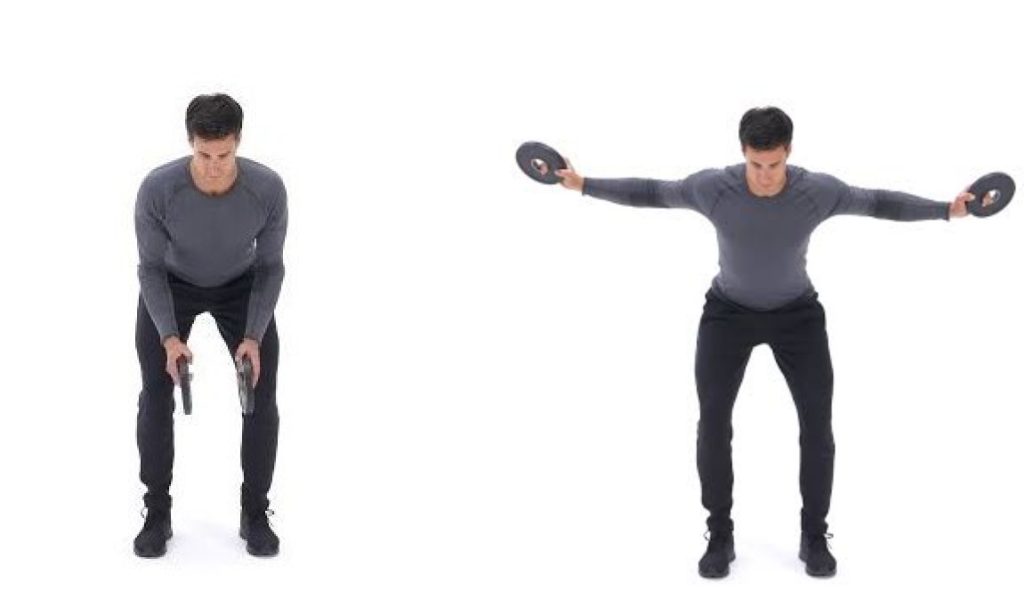
Replacing dumbbells with plates for your flies is another viable option. The shoulder flys with plates give a different contraction from dumbbells even with the same weight. The usual dumbbell grip is now replaced with finger grips with two or maximum three finger grips over plate removes the forearm from activating and provides a greater isolation of shoulder muscles.
The elite Olympic lifters always use plates instead of dumbbells for their shoulder training.
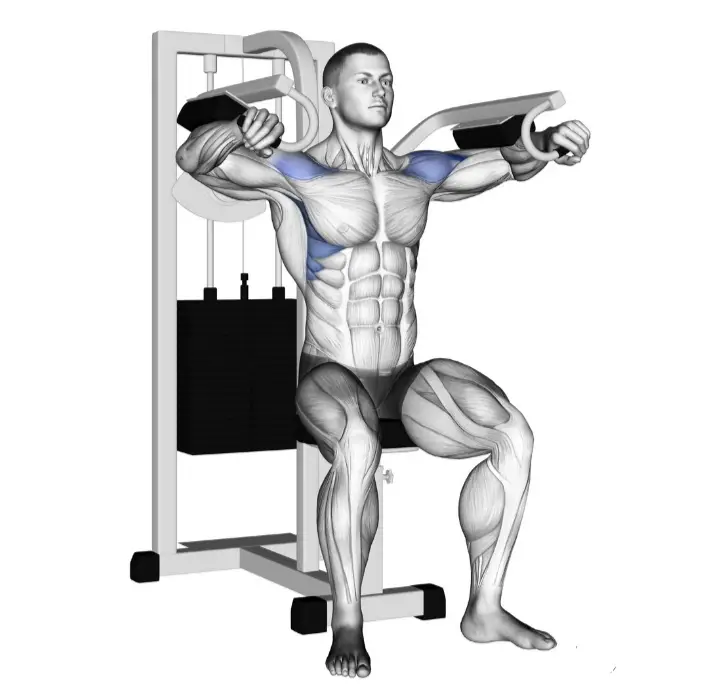
The modern working out has almost every exercise translated to a machine workout for safer and steadier progression.
The cable flys machine can be used as a reverse cable fly for rear delts, the lateral raise machine provides a greater range of motion.
The obvious point in using machines is the safety it provides with greater isolation of muscles. It helps in coping with injury, push heavier weight which might not be possible with dumbbells and progress gradually instead of 2,2.5 kg progression in dumbbells.
The dumbbells flys for shoulder workout is a staple workout which every lifter does whether they are beginners or advanced. You might not find a single lifter who hasn't spammed dumbbell lateral raises to get a wider frame.
The results will speak for themselves, doing dumbbell flys has become a much needed introduction for beginners and elite powerlifters don't do anything but dumbbell and plate flys for their shoulder development.
The conclusion here is clear and simple, if you want to succeed with flying colors you might need to fly with dumbbells.
Reverse dumbbell flys are a great exercise for rear delts, but it engages the upper back muscles a little bit and if you over extend your range of motion the primary muscle target shifts from rear delts to upper back, so the range of motion till where you extend the dumbbells to determines whether reverse flys will hit the shoulders or the upper back. So if you wish to train rear delts keep a strict range of motion while performing reverse flys or overextend your reach to train back.
The shoulder flys are as effective as the discipline and form of the person doing them.
Sure dumbbell flys have helped many people get well defined strong shoulders but doing them with excessive momentum and bad form can even render them useless, so mind your form and do every exercise with intent and purpose.
The question whether you should do your shoulder flys sitting or standing is often asked by beginners or by someone who has hit a plateau in growth.
If you are someone who struggles to maintain a perfect form during flys and experiences a lot of momentum coming in action even at light weight then doing your shoulder flys in seated position is a better option for you.
Experienced lifters who train their back intensively also opt for a seated variation as it removes tension from lower back.
If you are working on your balancing aspect and are training to control your over extending and momentum then standing shoulder flys will help you gain control.
Regular standing shoulder flys require you to be stable in the first place to do them and if it still seems to be difficult then lower the weight and try again.